


Ojon oil, wild crafted, cold pressed and filtered INCI Elaeis oleifera Fruit Oil Iodine value (IV) 50–70 g l 2 /100g Saponification number 180-200 mg KOH/g Ojon is a kind of palm from the Amazonian rain forest. This oil with a lovely orange/red colour contains almost 50% saturated fatty acids (lauric, palmitic, myristic , stearic and behenic) and 50% unsaturated fatty acids (oleic and linoleic). The deep red colour comes from the high content of carotenoids, mainyl alpha- and beta-carotene. Ojon oil is specifically effective in hair care specially in preparations for coloured and chemically damaged hair.
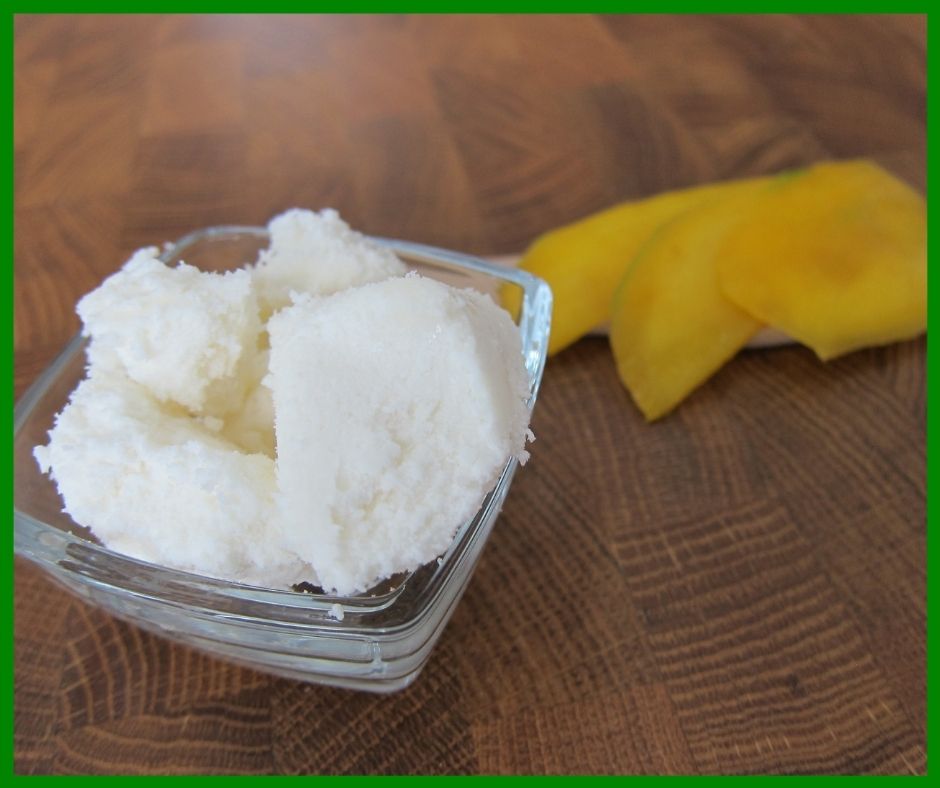
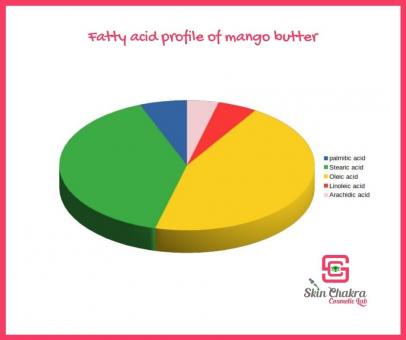
Mango butter, organic, refinedINCI: Mangifera Indica Seed ButterCAS# 90063-86-8EINECS # 290-045-4Melting point: 27-35 CIodine value: 33-49Saponification value: 180-195


INCI: Capsicum annuum var. annuum seed oilIodine value: 131,0 gI2/100 grSaponification number: 168 mg KOH/grCountry of origin: HungaryThis oil has a mild scent of paprika. It is derived from the seeds of sweet Hungarian paprika by cold pressing. The oil has a high content of linolenic acid and a high content of tocopherols. A concentration as low as 1% is enough to impart a beautiful orange-red colour in shampoo and shower gel, serums and lotions.
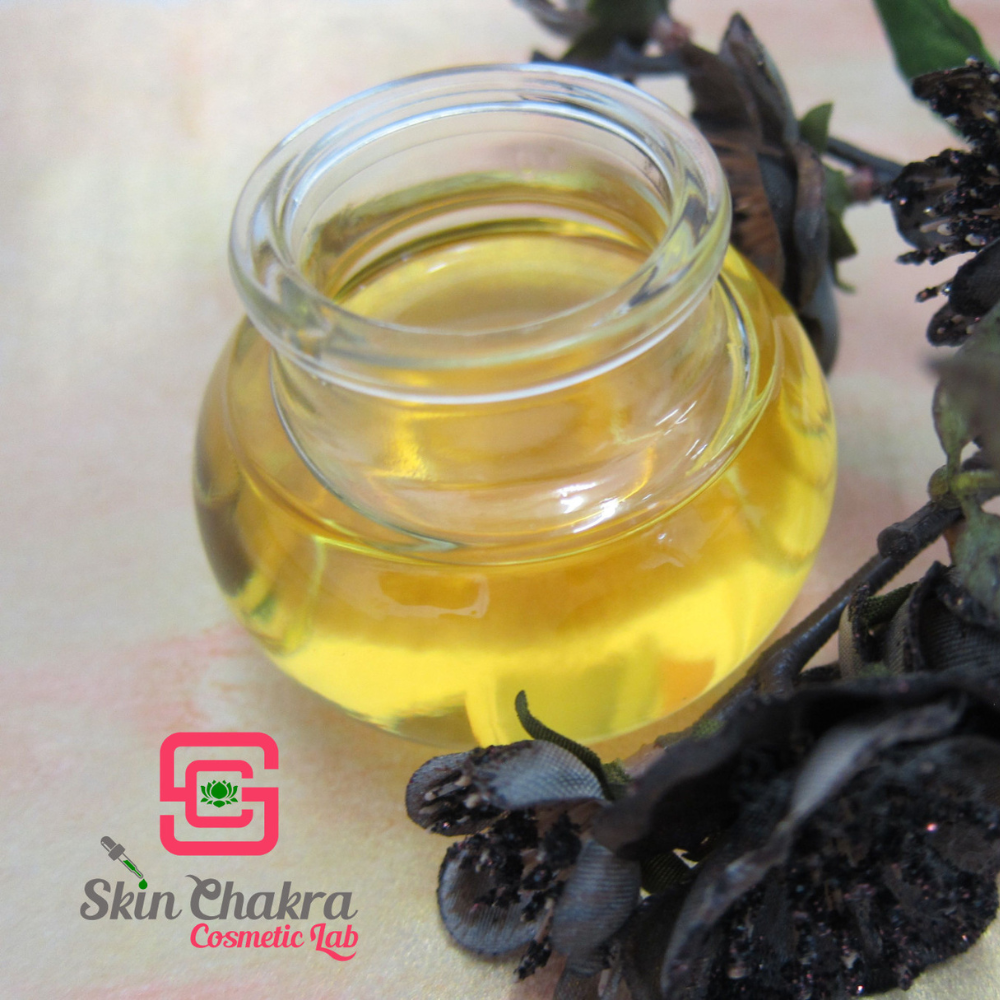
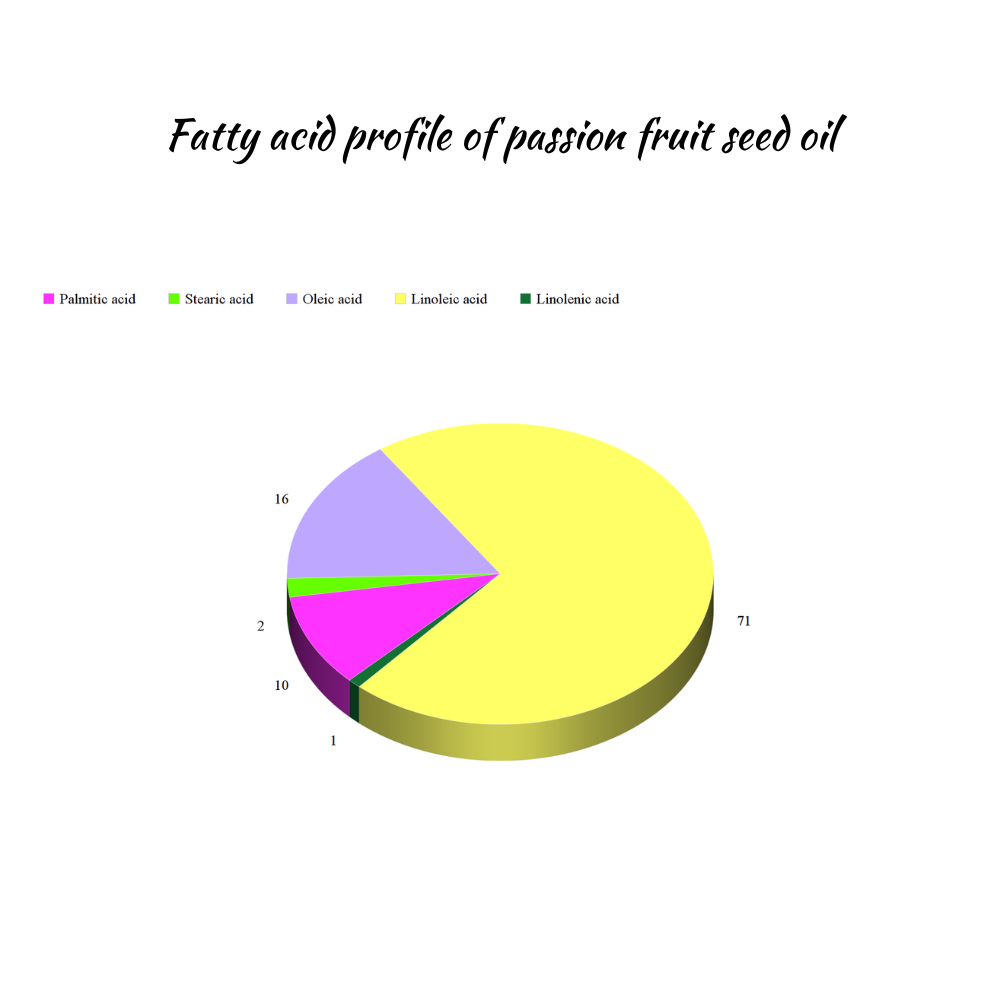
Organic Passion fruit seed oil, filtered, unrefined INCI-EU: Passiflora Edulis Seed Oil CAS-Nummer: 97676-26-1 Saponification value: 170-199 mg KOH/gr Iodine value: 130-145 This is an amazing oil from the seeds of the Amazonian fruit: maracuja or passion fruit. The oil is rich in Linoleic acid (62-77%) and oleic acid (12-20%), has a light to medium skin feel with the inherent scent of passion fruit. This unrefined oil has a dark reddish-yellow color. An extraordinary ingredient for all skin & hair care products. From suncare to bath oils and massage oils as well as soaps. Maracuja oil is rich in carotenoids, flavonoids and vitamin A. This oil contains about 5000 ppm tocopherols, mainly delta- and gamma- and more than 3000 ppm phytosterols, mainly beta-sitosterol This is a cosmetic grade and no food-grade ingredient.
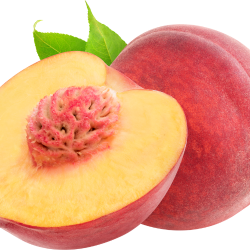
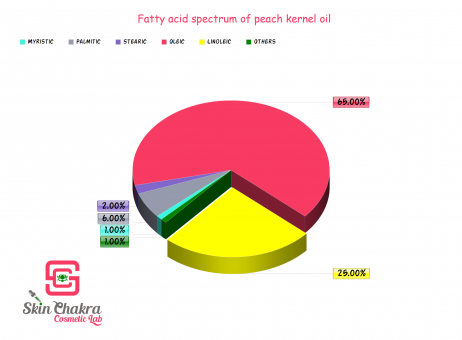
Peach kernel oil, organic, cold pressedINCI Name PRUNUS PERSICA KERNEL OILCAS # 8002-78-6 / 8023-98-1 / 84012-34-0Saponification value: 189-195 mg KOH/gIodine value: 94-110EC # - / - / 281-678-7The oil is similar to almond oil or apricot kernel oil in its profile but somehow finer and more luxurious. It is an excellent oil for dry, ageing and sensitive skin as well as for hair care and lip care. It is a good additive to cold process soap (about 5-15%). The oil is nourishing, skin protecting, emollient and relieves itching.


Pequi fruit oil, organic, unrefined, virgin INCI: Caryocar brasiliense fruit oil Iodine value 40-55 g l 2 /100g Saponification value 190-210 mg KOH/g Pequi oil is obtained by cold pressing of fruits of the pequi tree, an Amazonian tree. The oil is used in the kitchen for cooking and frying or as a butter replacement. Apart from that, it is gaining popularity in pharmacy and cosmetics. The yellow to orange colour of the oil is because of the high content of carotenoids. ca 67-290 ppm total content of carotenoids with ca. 62-115 ppm beta-Carotene and 11-20 ppm Lycopene. Pequi oil consists mainly of palmitic and oleic acid. It has a melting point around room temperature and is liquid during summer and semi-solid during winter, Pequi oil has a mild nutty scent. It is an excellent oil for pampering dry skin and hair, specially care and styling for curly and wavy hair. In a scientific study of 2011 it has shown antibacterial properties : salmonella cholerasuis (MIC < 1.25%), Staphylococcus aureus (MIC 1.25%), Pseudomonas aeruginosa (MIC 1.25%) and Streptococcus pneumoniae (MIC 5%)
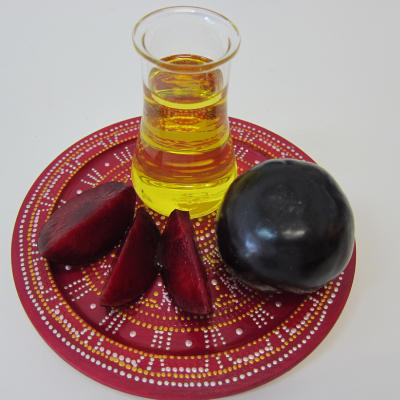
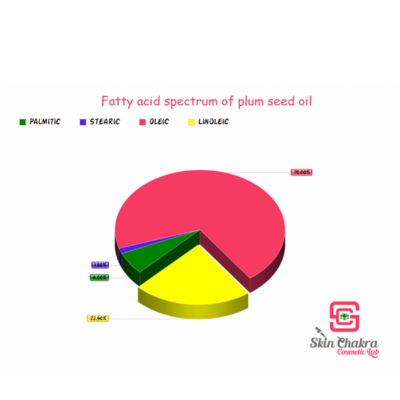
INCI: Prunus domestica seed oil CAS # 90082-87-4 EC # 290-179-3 Saponification value: 170-210 mg KOH/gr Iodine value: 90-120 This lovely oil with almost no inherent colour and a pleasant warm scent consists mainly of oleic and linoleic acids (omega-9 and omega-6). Apart from that, the unrefined and virgin oil, (cold pressed, no solvents used) contains high concentrations of phytosterols, mainly beta-sitosterol (815 ppm) and Delta-5-avenasterol (75 ppm) as well as high concentrations of alpha and gamma tocopherol (79 and 612 ppm respectively). An excellent oil for hair, body, face and lip care.
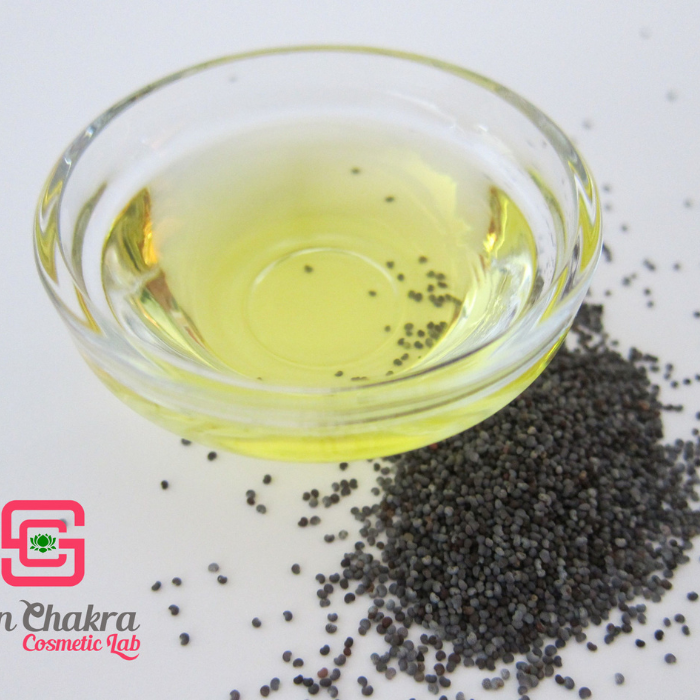
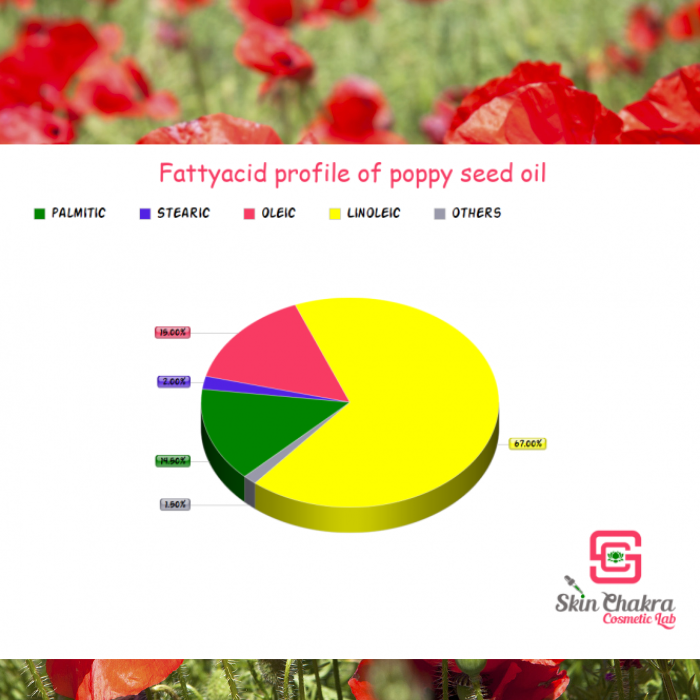
Poppy seed oil, organic INCI Name: PAPAVER SOMNIFERUM SEED OIL Family: papaveraceae CAS # 84650-40-8 EINECS/ELINCS # 283-510-8 Iodine value: 133-197 Saponification value: 189-197 mg KOH/gr The oil consists basically of oleic (30%) and linoleic acid (60%). It is a fine oil for cold dishes and salads with a spicy note. Poppy seed oil is an excellent skin and hair care oil with a slightly greasy after feel but a very covering and protecting effect. It is applied in all kinds of cosmetics and in luxury soaps. Applied in soaps, it helps harden the soap. It is an excellent anti-aging oil and contains about 500 ppm tocopherols and 400 ppm phytosterols (mainly spinasterol and campesterol)
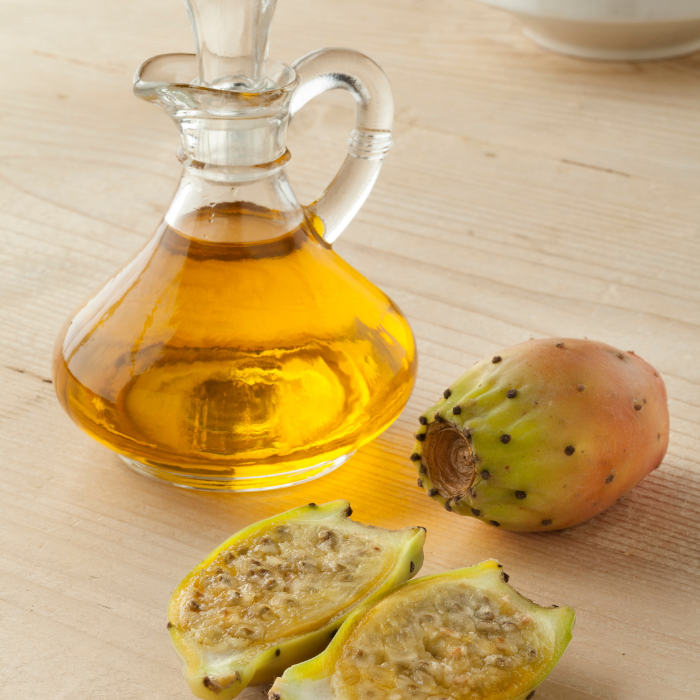
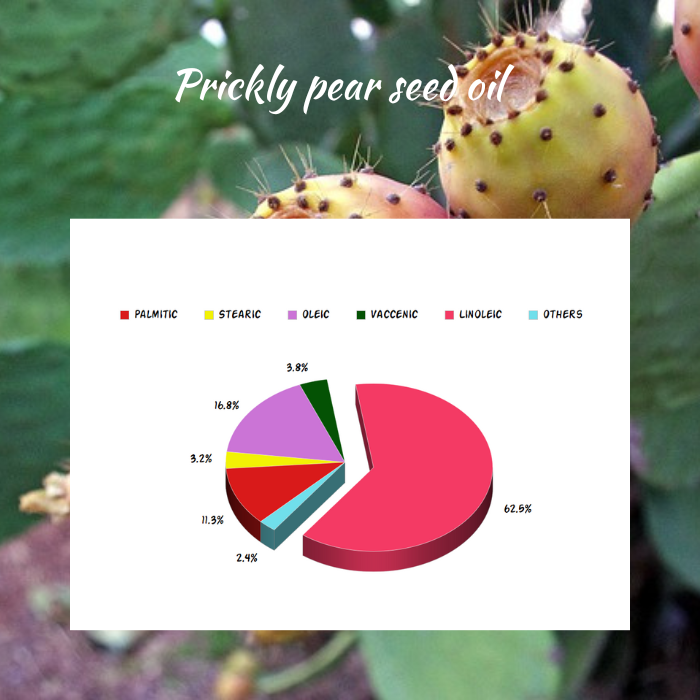
Organic prickly pear seed oil INCI: OPUNTIA FICUS-INDICA SEED OIL CAS # 90082-21-6 EC # 290-109-1 Iodine value: 100-129 g I2/100 gr Saponification value: 165-200 mg KOH/gr An extraordinary oil with an extraordinary composition. This oil has a high content of linoleic and palmitic (a constituent of our skin barrier) as well as a very high content of phytosterols (15000 ppm with beta-sitosterol being the major component) and a high content of tocopherols (540 ppm: mainly alpha- and gamma-) and beta-carotene (47 ppm)


Raspberry seed oil, virgin, cold pressed and organic INCI: Rubus idaeus seed oil CAS# 84929-76-0 EINECS# 284-554-0 Iodine value: 160-195 Sap. value: 191 mg KOH/gr High in linoleic (omega-6) and alpha-linolenic acid (Omega-3) this is a lovely oil for anti-aging formulations. The tocopherol content of the oil is about (3200 ppm) with 1260 ppm alpha-tocopherol and 1940 ppm gamma-tocopherol.
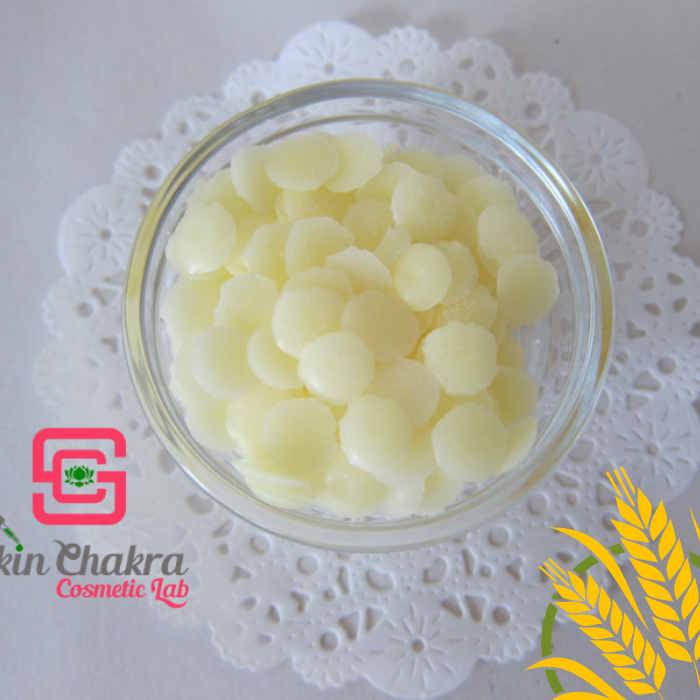
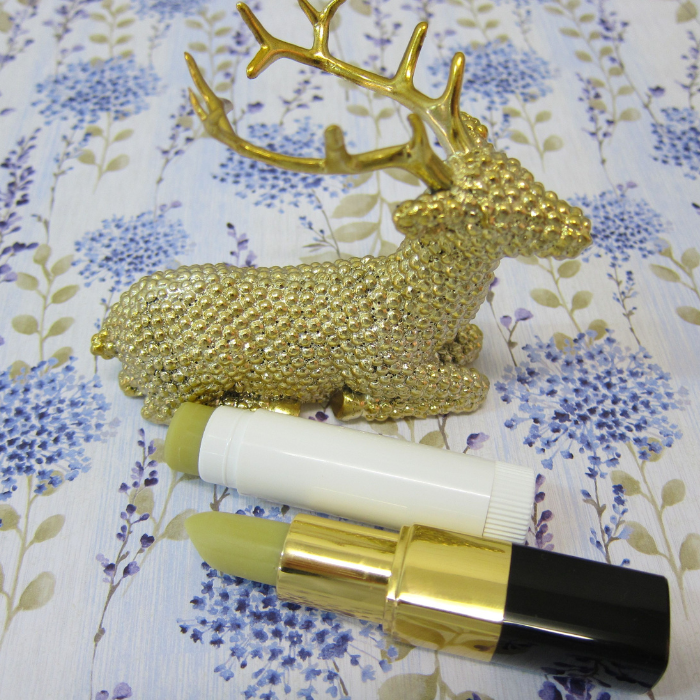
Rice bran wax, Ecocert (Cosmos natural), Halal and Kosher certified. INCI: Oryza sativa cera CAS#: 8016-60-2 Melting range: 79–85°C Acid value: <15 mg KOH/g Saponification value: 65-95 mg KOH/gr Rice wax is a pale yellow wax and is generated as by-product of the preparation of Rice bran oil. A unique milling, extraction, and refining process results in edible oil, waxy side-products, and crude wax. The latter is used for the production of Rice bran wax which mainly consists of esters of C 16 -C 24 fatty acids and higher alcohols (C 26 -C 32 ). Rice bran wax imparts a silky skin feel and reduces stickiness of emulsions. It is added to balms and butters to impart consistency , improve stability at high temperature and impart a matt optic. It is applied in all hair and skin care products specially in stick formulations such as lipstick, deodorant balms, hair styling wax, facial balm sticks and foundation sticks. Its melting point is in the range of carnauba wax and slightly higher than candelilla wax. It is a nice substitute for beeswax in vegan products and since its melting point is higher than bees wax, you need to reduce the dosage of the wax when replacing beeswax with rice bran wax.Download our free guide about natural waxes here.Read this blog post with a sample formulation


Rose hip oil, organic, virgin, cold pressed INCI: Rosa canina fruit oil CAS# 84696-47-9 / 84603-93-0 EINECS# 283-652-0 / - Saponification value:189-194 Iodine value:152-169 This amazing oil with a high content of linoleic acid, oleic and alpha-linolenic acid is very popular as an astringent oil and in cosmetic products to improve scars and stretchmarks and to promote wound healing and regenerating tissue and promoting collagen production. Its extraordinary therapeutic properties are due to low contents of trans-retinoic acid. The oil has a low content of tocopherols (390 ppm) and we recommend you add either 0,1% tocopherol or rosemary CO2 extract to protect it against oxidation. Although the fruit contains 20 times as much ascorbic acid (vitamin C) as oranges, the oil does not contain any vitamin C. Read this blog post about Rosehip oil and its comparison to the rosehip CO2 extract.


Sacha-Inchi oil, organic, virgin, cold pressed INCI: Plukenetia Volubilis seed oil Saponification value:192-196 Iodine value:183-199 Known as sacha peanut or mountain peanut, Sacha-inchi is one of the richest plant sources for omega-3 and omega-6 fatty acids (alpha-linolenic acid and linoleic acid respectively). Apart from that, the oil has a high content of tocopherols (>2000 ppm), mainly gamma- and delta-tocopherol that contribute to the oxidation stability despite the high iodine value and high content of poly-unsaturated fatty acids (PUFAs). Traditionally, the oil is used as food and as a cosmetic ingredient. Despite what some bloggers mention, the oil smells nutty but not fishy (just because fish oil is a source of omega-3 it doesn't mean all oils rich in omega-3 shall smell fishy). Known as a superfood, sacha-inchi oil is one of the most important and widely used vegan omega-3 sources.


Shea Butter, organic and refinedINCI: Butyrospermum parkii butterkbAEU and NOP certified byKiwa BCS DE-ÖKO-001Iodine value: 55,0-75,0 g I2/100 grSaponification value: 180,3 mg KOH/gThe butter is derived from the dried nuts from the shea tree ((Butyrospermum parkii) by pressing. The nuts contain ca. 34-57% lipidsApart from fatty acids (mainly stearic acid 32-50% and oleic acid 40-57%) it contains wax esters, phytosterols (such as Campesterol, Stigmasterol, beta-Sistosterol and alpha-Spinosterol), Triterpenes, Tocopherols undallantoin. The melting point is just above the skin temperature and it melts over skin with a pleasant skin feel.Storage: Dry, ambient storage (20°C +/- 5°C) under absence of direct sunlight.Cool storage (10°C +/- 5°C) can significantly enhance quality preservation. Freezing should beavoidedBest before date: 05/25


INCI Name: FRAGARIA ANANASSA SEED OIL Family: Rosaceae Iodine value: 180 Saponification value: 194 mg KOH/gr This is a lovely oil with a high content of linoleic and alpha-linolenic acid. Suitable for damaged and sensitive as well as for mature skin. With its content of palmitic acid it performs as a barrier covering and protecting oil without unwanted greasiness. Strawberry seed oil performs excellent hair conditioning properties. It has a medium content of tocopherols: alpha-tocopherol ca. 100 ppm, gamma-tocopherol ca. 600 ppm, delta-tocopherol ca. 25 ppm.


INCI: PRUNUS AMYGDALUS DULCIS OILCAS#: 8007-69-0 / 90320-37-9EINECS: - / 291-063-5Iodine value: 93–105Saponification number: 185–195A modest and ageless oil for all skin & hair care products .Sweet almond oil is one of the most versatile oils in skin and hair care as well as in baby care. Although some formulators prefer exotic oils with more fanciful names, organic almond oil is still the number 1 choice when it comes to dry, sensitive and scaly skin, dry and damaged hair or baby skin.Being very neutral in colour and having a decent scent, it is an excellent oil for aromatherapy or for preparing macerated oils.Almond oil is rich in oleic acid and in omega-6 fatty acid, linoleic acid which performs anti-inflammatory properties. It has a content of ca. 2600 ppm phytosterols (mainly beta-sitosterol).Being very gentle to skin and eyes, it is an excellent oil for eye make-up removing products and skin cleansing milks and oleogels.As if all that is not enough, almond oil is an excellent oil for soap making, creating a rich lather.When applying almond oil in your formulations, please consider the possible allergy to nuts.
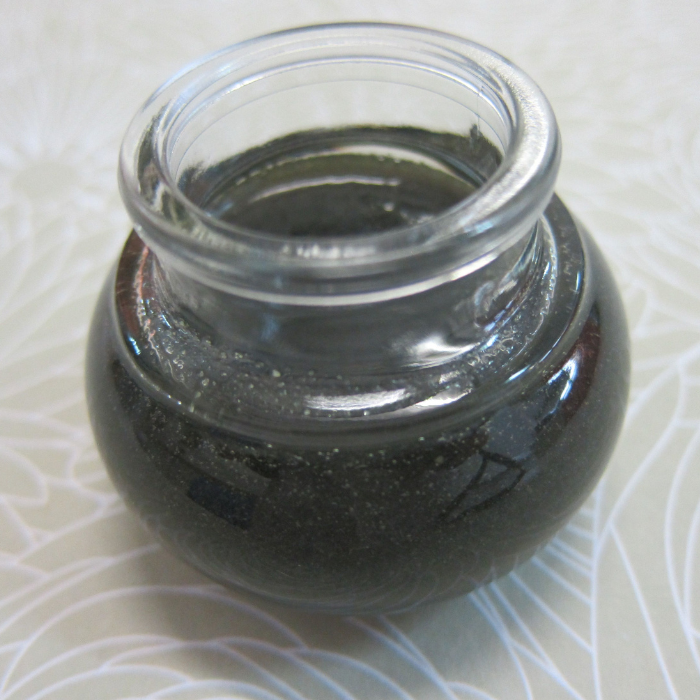
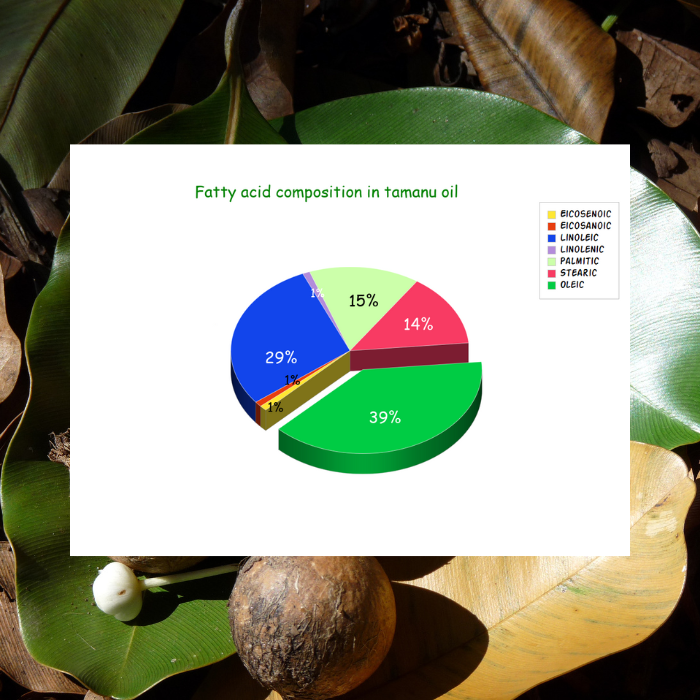
Organic tamanu oil, cold pressed INCI: CALOPHYLLUM TACAMAHACA SEED OIL Saponification value : 185 - 235 mg KOH/g Iodine value: 99-108 Tamanu oil is obtained from the seeds of the fruit. The oil has a dark green colour. Virgin tamanu oil has antibacterial properties (because of low concentrations of coumarins such as costanolid and inophyllum) and is often used to treat acne prone skin. Neo-flavonoids such as caliphylloid impart to antibacterial, anti-inflammatory, astringent and wound healing properties as well as reduction of scars. Traditionally it is used for wound treatment, reduction of scars and enhancing microcirculation. It is an amazing oil for hair and skin care with a good coverage and barrier protection. It is one of the unique plant oils with ca. 92% neutral lipids, 6-7% glycolipids and 1-2% phospholipids. Application dosage: although there are no safety/legal limits for the dosage, this oil is seldom used as a standalone oil and is usually combined (1-20% ) with other oils and ester oils.In winter the resins in the oil solidify. Gently heat the container between 25-35 C and shake the container before using the oil.


INCI: CYPERUS ESCULENTUS ROOT OILCAS# 223748-92-3Iodine value: 81,5 gI2/100 grSaponification number: 192,5 mg KOH/grCountry of origin: Burkina FasoThis is an aromatic oil with a mild nutty scent. Rich in polyunsaturated fatty acids but yet with a low iodine value that can be hot processed. The oil is rich in phytosterols specially in beta-sitosterol.Best before date: 08/2025
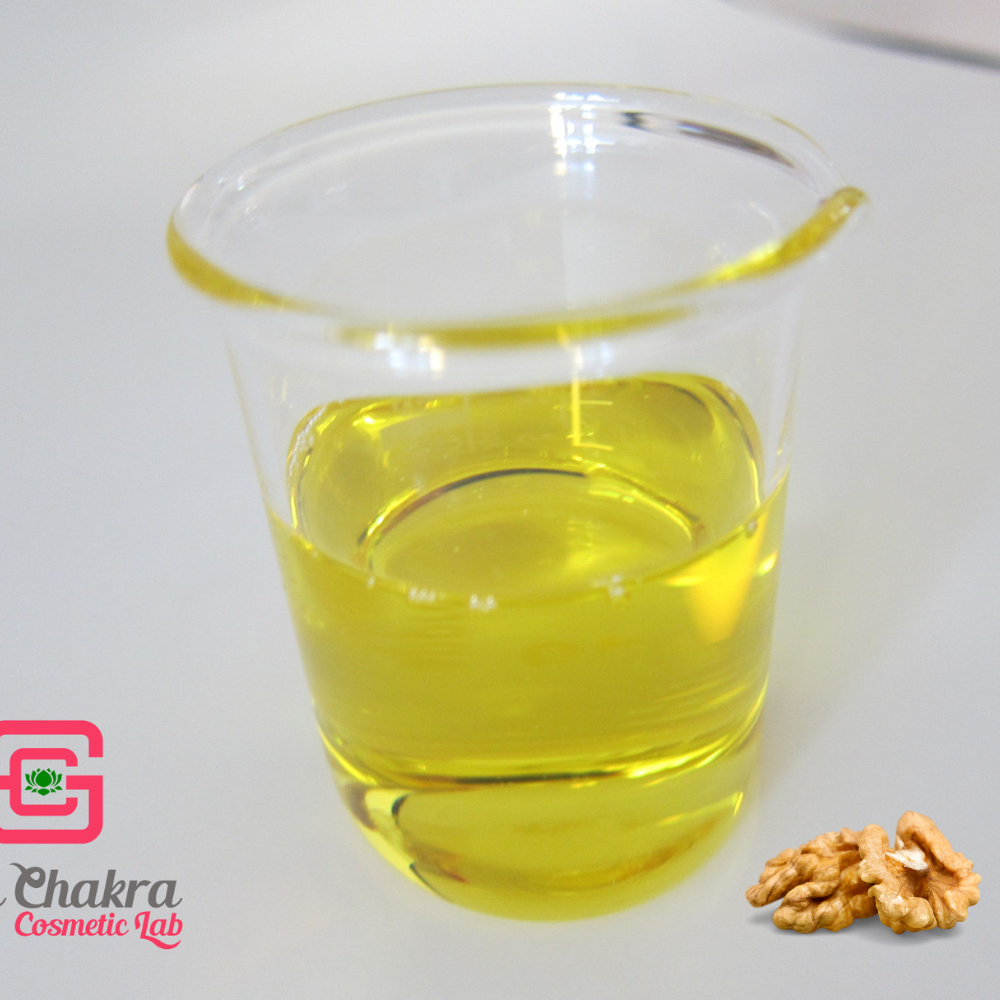
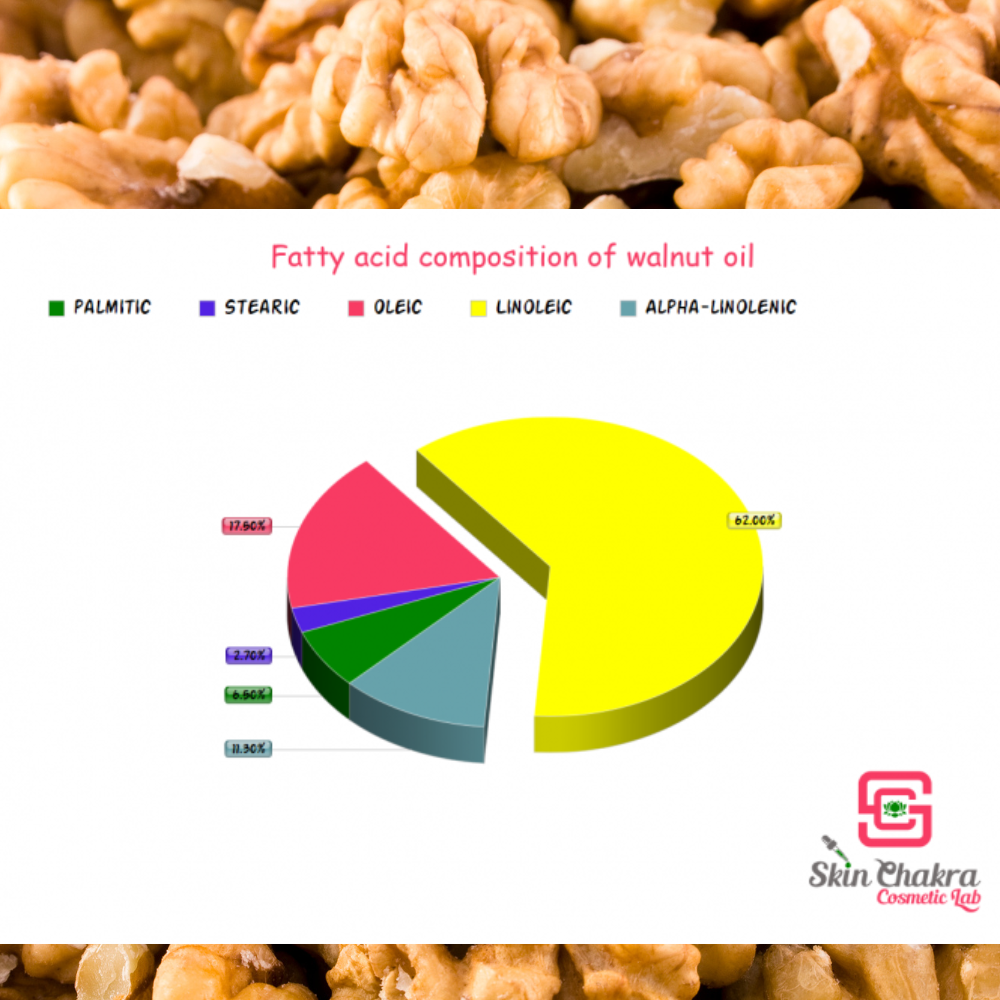
Walnut oil, organic and cold pressed INCI Name JUGLANS REGIA SEED OIL CAS # 8024-09-7 / 84012-43-1 EC # - / 281-688-1 Iodine value:135-151 Sap. value: 189-198 mg KOH/gr Walnut oil is an excellent culinary (for salads and cold meals) as well as skin and hair care oil. Being rich in linoleic acid and with an excellent linoleic:alpha-linolenic acid similar to skin lipids it is very suitable for baby skin care and for irritated, inflamed, itchy and scaly skin. Walnut oil contains about 60% linoleic acid, 13% α-linolenic acid, 15% oleic acid, 3% stearic acid and 7% palmitic acid. (this is why it readily absorbs without leaving a fatty after feel). The unsaponifiables are: Vitamin A & K, Tocopherol (mainly γ-Tocopherol), Lecithin, Phosphor. We recommend its application around 10-25% in skin care products and around 10% in natural soaps. Since the oil is sensitive against oxidation, we recommend to protect it with 0,2-0,5% tocopherol against oxidation.
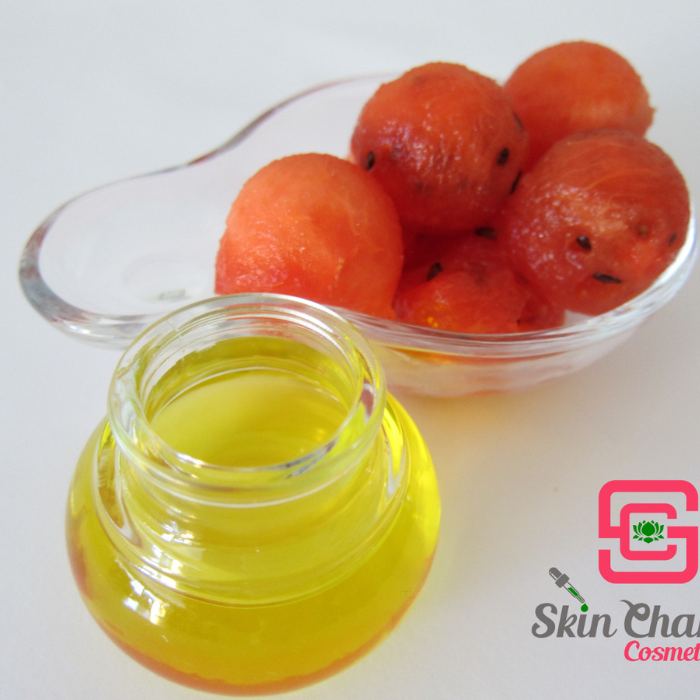
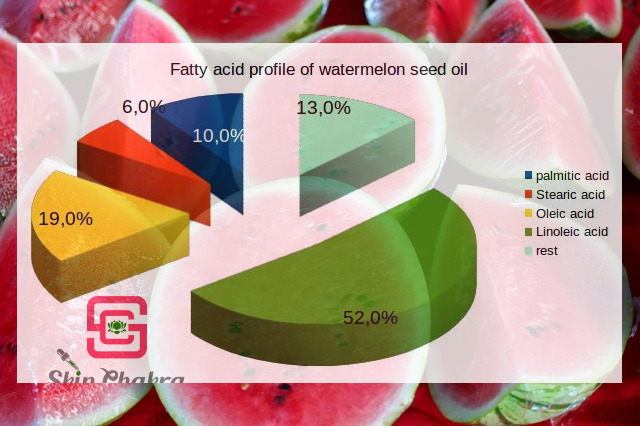
INCI: Citrullus Lanatus seed oil CAS#: 90244-99-8 EINECS# : 290-802-9 Sap. value: 185-195 mg KOH/gr Iodine value: 97-128 Watermelon seed oil has a lovely skin feel and is recommended for all skin types. It has a high content of linoleic (omega-6) acid and quite effective in pampering dry and damaged skin. Its oil profile is very similar to pumpkin seed oil. With its palmitic and stearic acid content, watermelon seed oil provides the skin with a nice and effective (but not fatty) protective film. Other fatty acids (at low concentration) include: palmitoleic acid, behenic acid, arachidic acid, lignoceric acid, ecosenic acid and alpha-linolenic acid.
